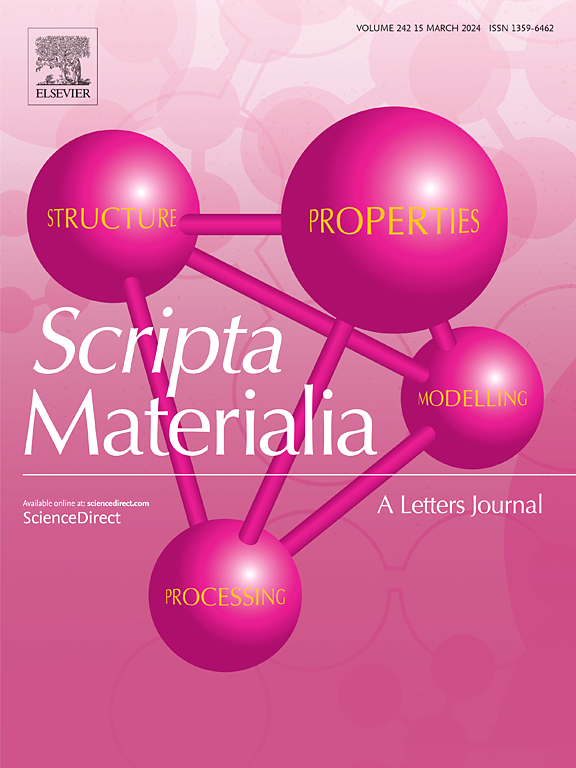FCC Ni-Cr-Fe合金长程有序的原子模型
IF 5.3
2区 材料科学
Q2 MATERIALS SCIENCE, MULTIDISCIPLINARY
引用次数: 0
摘要
本文研究了面心立方Ni-Cr-Fe体系的热力学和动力学,重点研究了Ni0.67(1−x)Cr0.33(1−x)Fex (x=0 - 0.1)合金的有序-无序相变。建立了二元Ni-Cr和Ni-Fe合金的相互作用对模型(PIM),其中很大一部分基于密度泛函理论(DFT)计算和CALPHAD模型,并利用实验有序-无序转变温度和扩散数据进行了调整。蒙特卡罗模拟使用这种PIM产生详细的相图和动力学洞察排序过程。模拟结果显示,加起来是10at。Fe通过减缓原子扩散延长了孵育时间,而Ni-Cr比的轻微偏差对有序动力学的影响最小。虽然需要额外的实验数据——特别是在低温和高铁含量的情况下——来进一步验证模型,但我们的结果与现有的关于有序孵育时间的实验数据相当吻合,捕捉到了合金的关键特性。本文章由计算机程序翻译,如有差异,请以英文原文为准。

Atomistic modeling of long-range ordering in FCC Ni-Cr-Fe alloys
This study examines the thermodynamics and kinetics of the face-centered cubic Ni-Cr-Fe system, focusing on the order-disorder phase transformation in NiCrFex ( – 0.1) alloys. A pair interaction model (PIM) is developed, with a significant portion based on density functional theory (DFT) calculations and CALPHAD models for binary Ni-Cr and Ni-Fe alloys and further adjusted using experimental order-disorder transformation temperatures and diffusion data. Monte Carlo simulations using this PIM yield detailed phase diagrams and kinetic insights into the ordering process. The simulations reveal that adding up to 10 at.% Fe extends the incubation time by slowing down the atomic diffusion, while slight deviations in Ni-Cr ratio have minimal impact on the ordering kinetics. Although additional experimental data would be required—especially at low temperature and high Fe content—for further validation of the model, our results match reasonably well with the available experimental data on ordering incubation times, capturing the alloy's key characteristics.
求助全文
通过发布文献求助,成功后即可免费获取论文全文。
去求助
来源期刊

Scripta Materialia
工程技术-材料科学:综合
CiteScore
11.40
自引率
5.00%
发文量
581
审稿时长
34 days
期刊介绍:
Scripta Materialia is a LETTERS journal of Acta Materialia, providing a forum for the rapid publication of short communications on the relationship between the structure and the properties of inorganic materials. The emphasis is on originality rather than incremental research. Short reports on the development of materials with novel or substantially improved properties are also welcomed. Emphasis is on either the functional or mechanical behavior of metals, ceramics and semiconductors at all length scales.
 求助内容:
求助内容: 应助结果提醒方式:
应助结果提醒方式:


